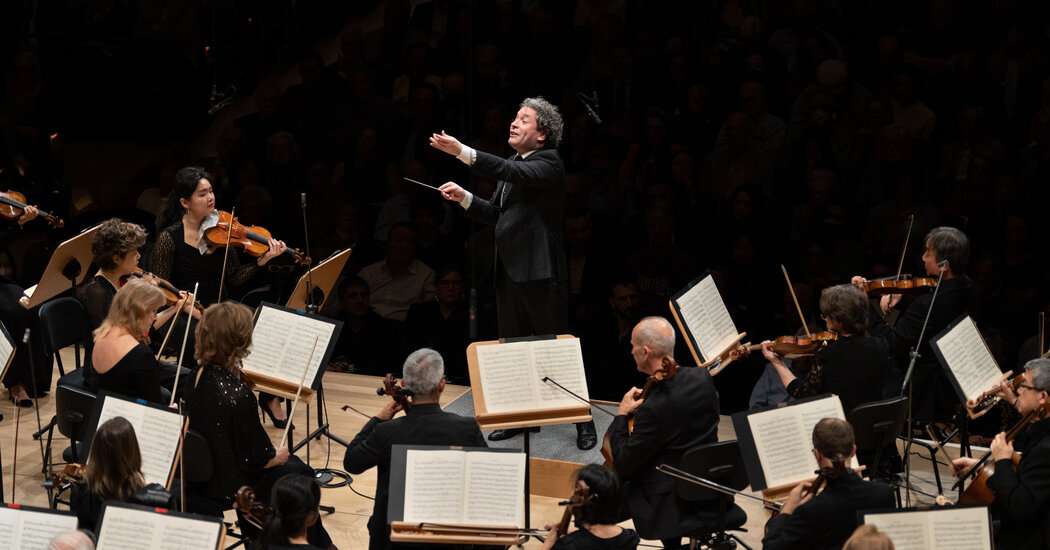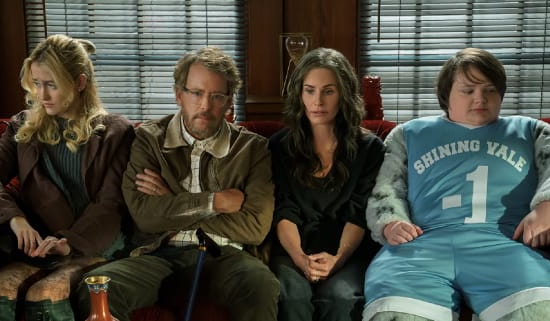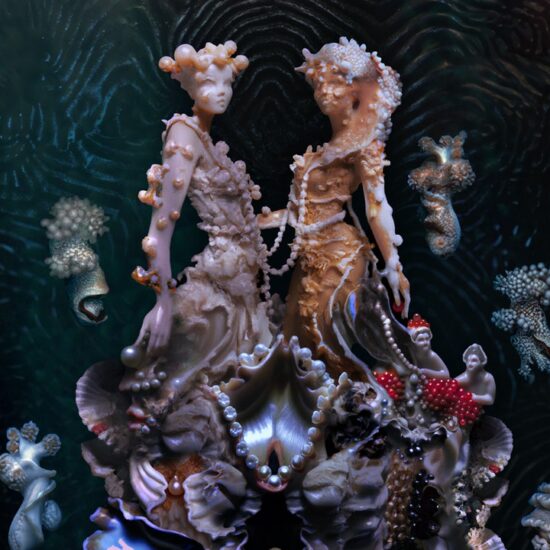
Gustavo Dudamel began his reign at the New York Philharmonic on Friday with an ending.
Greeted with a roar from the audience as he appeared with the orchestra at David Geffen Hall for the first time since being named its next music director, this superstar maestro conducted Mahler’s ninth and final completed symphony, one of the repertory’s great evocations of farewell. Few works survey the span of a life — its highs and lows — more thoroughly and unsparingly, from the pastoral to the hysterical, from raucous existence to pianississimo death.
The program was planned long before Dudamel’s appointment, but it turned out to be ideal for this moment. Nearly an hour and a half long, Mahler’s Ninth fills a concert on its own. No overture; no soloist; no intermission.
On Friday it provided a long, focused communion between a conductor and the players he’ll be leading in the years to come. (Dudamel’s predecessor, Jaap van Zweden, finishes next season and, because of classical music’s ludicrously slow planning cycles, Dudamel, currently at the Los Angeles Philharmonic, won’t officially start his five-year contract until 2026.)
The Ninth was ideal for the moment, too, because this orchestra has a particular claim on Mahler, who briefly but indelibly served as its chief conductor around the time he was finishing the symphony, just before his death in 1911. While hardly a rarity, the Ninth is a piece that the Philharmonic has mostly entrusted to its music directors — including Bruno Walter and Leonard Bernstein, two of the 20th century’s most influential Mahlerians.
With the weight of this history palpable, Dudamel achieved in this sprawling, complex and bracing score a kind of casualness. He gave a sense of this as just another piece.
This Ninth wasn’t a hothouse flower or a religious rite. Leading with easy flow and, especially in the great Adagio fourth movement, a tendency toward briskness, Dudamel had no interest in the self-seriousness that can easily bend this symphony toward exaggerated solemnity. The goal seemed to be bright freshness more than autumnal glow.
Conducting without a score in front of him or a podium railing behind — there are, he seemed to be saying, no barriers between me, the players and the audience — Dudamel persuasively and naturally guided the score’s many slight, important shifts of pace. The deceleration to the end of the first movement was artful, and the complicated transitions at the close of the third were lucid. The music never felt bullied, manipulated or artificially inflated.
At the start of the finale, the strings that interrupt a funeral dirge in the bassoon weren’t a slap in the face, but a swift tidal inundation. Those strings had earlier played with mossy darkness in the first movement’s passionately strange “Leidenschaftlich” passage.
Throughout the symphony, the trumpets had the right coppery bite. The principal harp, Nancy Allen, brought the smooth, slightly unearthly resonance of temple bells to her music. Ryan Roberts, on English horn, played with his usual flawless poetry in small yet meaningful solos, especially near the end. Cynthia Phelps, the principal viola, offered both tenderness and tanginess.
And yet missing from the evening was a certain degree of personality and depth.
If the beginning of the first movement was clear and straightforward, it also lacked mystery and poignancy — an establishment of mood beyond mere accuracy. The murky, brooding music later in that movement, a nod to Wagner’s depiction of the magical, shapeshifting Tarnhelm in his “Ring,” passed without phosphorescent eeriness.
While there was understandably a sense of celebration in the sold-out hall on Friday, which bled into the performance, it’s not clear that love-fest is the right mood for much of Mahler’s Ninth. In the second movement, bouncing up and down at the knees and making smiling cues with a flared left hand, Dudamel led a ländler dance that was more sweetly rustic than ominously rough. And there was a breezy, circuslike feel to the waltz it transforms into, rather than anything sinister. This was not a rendition of the Mahler who prefigured Shostakovich.
Some restraint in that second movement — even some sunniness — might make sense so as to leave somewhere to go in the unquestionably more explosive third. But on Friday, that Rondo-Burleske third movement wasn’t really intense, either.
While the first measures were sumptuously grand, there was no sense of grotesquerie, self-mockery or more than slight pepperiness in what followed, so the sudden slowing into the consoling, contrasting theme — like a roof opening to reveal the full expanse of the starry night sky — didn’t have the necessary impact. Dudamel hadn’t brought us to a place from which we needed to be consoled.
This wasn’t particularly light-textured playing, but the feeling was nevertheless almost airy, with a reticence in the lower strings. Eighty minutes seemed to pass quickly — perhaps too much so.
With the orchestra’s principal horn position currently vacant, Stefan Dohr, who fills that role for the Berlin Philharmonic, was a guest, to uneven effect. In his crucial part here, Dohr was steady, but the mellow solidity of his tone, shading into leadenness, didn’t seem quite in the same sound world as his colleagues. The passing around of solos through the winds in the fourth movement offered a feeling of humanity but, like this performance as a whole, felt a bit stranded: neither elegant nor raw.
The Philharmonic still tends to gesture toward super-soft playing rather than really achieving it, let alone relishing it. And with an edgy thinness to the orchestra’s sound at full cry, rather than rounded, blended warmth, I felt a revival of my concerns from the fall opening of the renovated Geffen Hall about the space’s clear but stark acoustics.
Under Dudamel’s baton, the symphony’s final minutes, as the strings gradually dim to nothingness, were as sensible as I’ve ever heard them. This was a pleasantly even-keeled lullaby rather than a radical or wrenching depiction of life draining away. The playing was poised, but it left a ways to go in profundity.
It was an ending. But for this conductor and this orchestra, it felt like a place to start.
New York Philharmonic
This program continues through Sunday at David Geffen Hall, Manhattan; nyphil.org.













